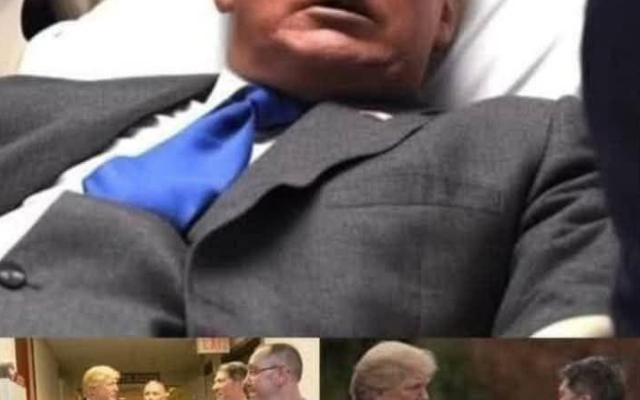The Truth Behind Viral Political Photos: How Misleading Images Spread Online
In today’s hyperconnected digital world, images can spread faster than the truth. A single photo, taken out of context or altered slightly, can reach millions of people in minutes — sparking outrage, fear, or misplaced sympathy before anyone has time to verify what really happened. Political figures, more than anyone else, often find themselves at the center of this storm. The modern internet age has turned pictures into powerful weapons of persuasion, capable of shaping public opinion overnight.
The Power of a Single Image
Humans are visual creatures. We process images much faster than words, and pictures often evoke emotion before logic can catch up. That’s why political imagery has always been central to persuasion — from campaign posters in the early 20th century to the sleek social media graphics of today. But now, with smartphones, photo-editing apps, and viral sharing, anyone can create or circulate images that look convincingly real.
A politician seen in a hospital bed, a photo showing them shaking hands with controversial figures, or a picture depicting chaos around them — all these visuals can change how the public perceives them. Even when they’re fake or outdated, once they’ve been shared thousands of times, the damage is often irreversible.
How Images Go Viral
The viral journey of a misleading political photo often starts with a small social media post. It might appear on a private page, a fan group, or a “breaking news” account designed to look like a credible outlet. The image is posted with a dramatic caption — “Minutes ago…” or “Shocking scenes from Washington!” — triggering curiosity and urgency.
Within minutes, people share it out of emotion rather than verification. Algorithms reward engagement, not truth, so platforms amplify whatever gets clicks, likes, and comments. The more emotional the post, the faster it spreads. And because most users don’t stop to fact-check, false visuals can travel six times faster than accurate news, according to studies from MIT.
The Anatomy of a Misleading Image
There are several ways political images become misleading — sometimes by manipulation, and sometimes by omission.
-
Old Photos Used as “New” Evidence
One of the most common tricks is recycling old images from unrelated events. A picture from years ago — say, a hospital visit or a campaign stop — gets re-captioned as if it happened today. Without context, viewers assume it’s current. -
Edited or Cropped Images
A small edit can drastically change meaning. Cropping a photo to exclude other people, adjusting lighting, or adding subtle effects can make a peaceful moment look tense or make someone appear ill or weak. -
AI and Deepfakes
Artificial intelligence has taken misinformation to a new level. Deepfake technology can create realistic images and videos that never actually happened. Although experts can often detect them, most social media users cannot. -
Misleading Captions and Headlines
Sometimes, the photo itself is genuine — but the caption tells a different story. The human brain tends to trust what it sees, so if a caption claims a politician was “shot” or “collapsed,” many will believe it, even if the image shows no such thing.
Why People Believe and Share Fake Photos
Misinformation doesn’t spread only because of bad actors; it spreads because of human nature. When people see something that confirms what they already believe, they’re more likely to accept it without question. Psychologists call this confirmation bias.
In political contexts, emotions like anger, fear, and pride play a big role. Supporters may share an image that paints their opponent in a bad light to “expose the truth,” while opponents might share it to mock or condemn. In both cases, emotion overrides skepticism.
Social validation adds another layer. Seeing friends share the same image makes it feel more authentic, even if no one has verified it. This “herd effect” turns social media into a breeding ground for mass belief — even in the absence of facts.
The Consequences of Viral Misinformation
When a misleading image involves a political leader, the effects can ripple far beyond social media.
-
Public Confusion: People who see the photo may assume something serious has happened — such as an assassination attempt or a health crisis — leading to panic or unrest.
-
Erosion of Trust: Once people realize the image is fake, they may distrust all media, including legitimate journalism. This deepens polarization and weakens democratic dialogue.
-
Reputational Damage: Even after a false story is debunked, some people continue to believe it. Psychologists call this the continued influence effect — once misinformation is internalized, it’s hard to undo.
In extreme cases, viral political photos have even incited real-world violence or protests based on fabricated events. That’s why misinformation isn’t just an online nuisance — it’s a national security issue.
How to Spot Misleading Political Images
Fortunately, there are practical ways to protect yourself from falling for — or sharing — fake visuals.
-
Check the Source: If an image comes from an unknown Facebook page, Telegram channel, or Twitter account, be skeptical. Reputable news outlets verify before posting.
-
Reverse Image Search: Tools like Google Images or TinEye can show where else the picture has appeared and when it was first published.
-
Look for Metadata: Many photos carry hidden data about when and where they were taken. Some fact-checkers publish this information.
-
Examine Details: Shadows, reflections, and proportions can reveal digital edits. AI-generated images often struggle with fine details like hands or text.
-
Cross-Verify: See if multiple reliable sources are reporting the same event. If it’s truly major news, outlets like AP, Reuters, or BBC will have covered it.
The Role of Fact-Checkers and Technology
In response to the flood of manipulated content, independent fact-checking organizations have become vital. Platforms like Snopes, PolitiFact, and Reuters Fact Check investigate viral claims daily, often debunking them within hours.
Meanwhile, tech companies are experimenting with AI tools to detect synthetic media. For example, some image databases now embed invisible watermarks in authentic photos, while new standards like “Content Credentials” aim to track digital provenance — showing when, where, and how an image was edited.
However, technology alone can’t solve the problem. Human skepticism remains the best defense.
Why Media Literacy Matters More Than Ever
Ultimately, stopping the spread of misleading political photos starts with education. People need to understand not just how to fact-check, but why verification matters. In an era where perception can become reality, every shared image is a potential act of influence.
Schools, newsrooms, and social platforms are increasingly teaching media literacy — the ability to analyze, evaluate, and question information sources. This skill empowers citizens to think critically, recognize bias, and demand accountability from media creators and politicians alike.
Conclusion
A picture may be worth a thousand words, but in the digital age, it can also spread a thousand lies. Misleading political photos thrive on speed, emotion, and confusion — exploiting the very tools designed to connect us.
The next time a dramatic image floods your feed, pause before sharing. Ask where it came from, when it was taken, and whether trusted outlets have confirmed it. In doing so, you become part of the solution — a citizen who values truth over clicks, and accuracy over outrage.
In the battle between misinformation and integrity, every skeptical viewer is a defender of democracy itself.


